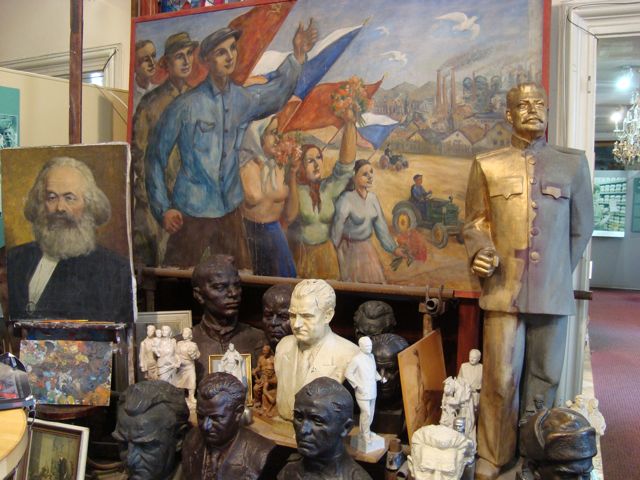
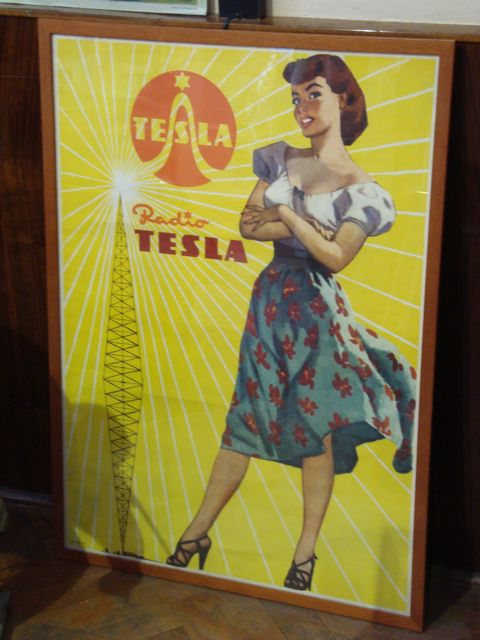
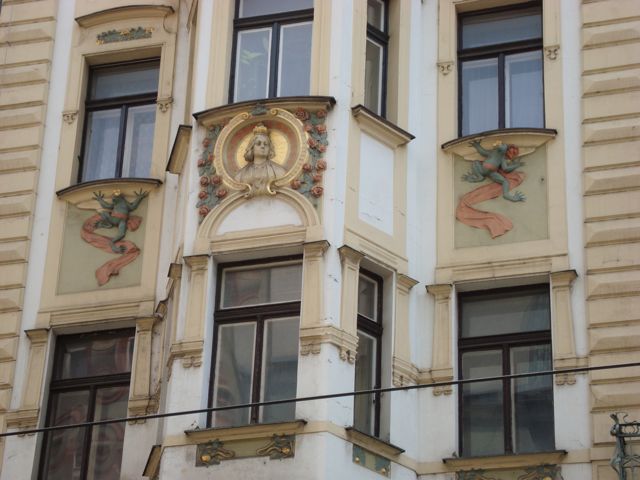

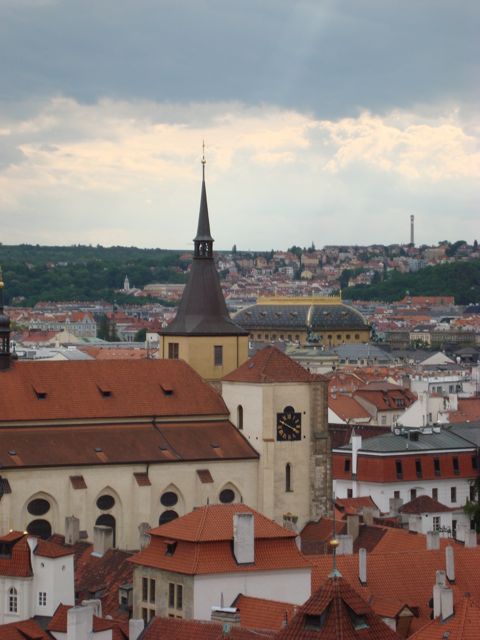
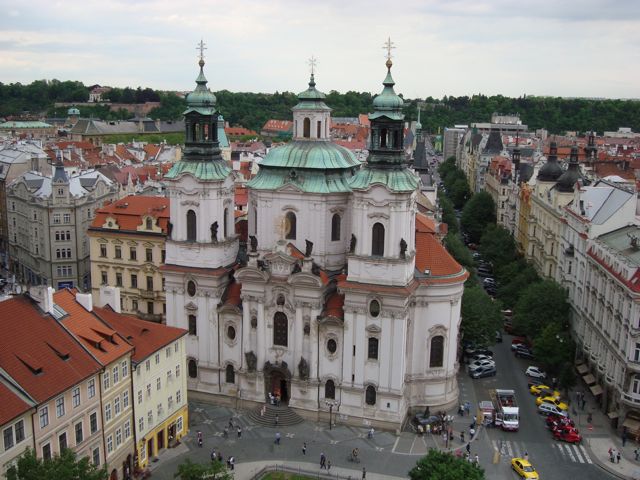
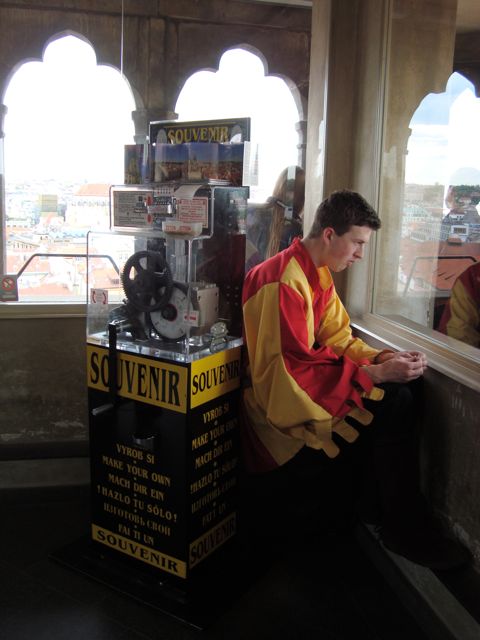
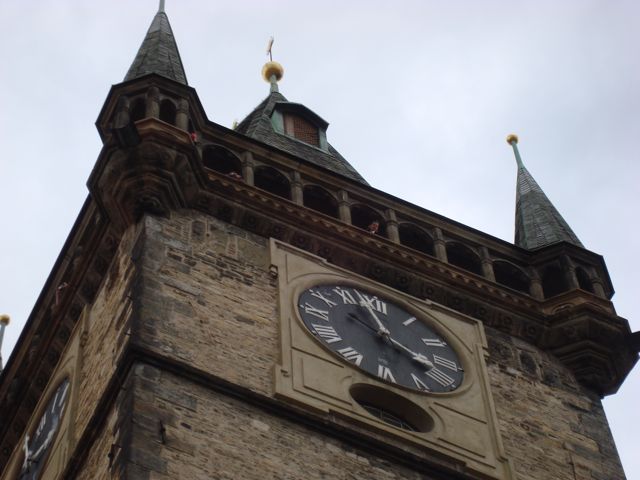
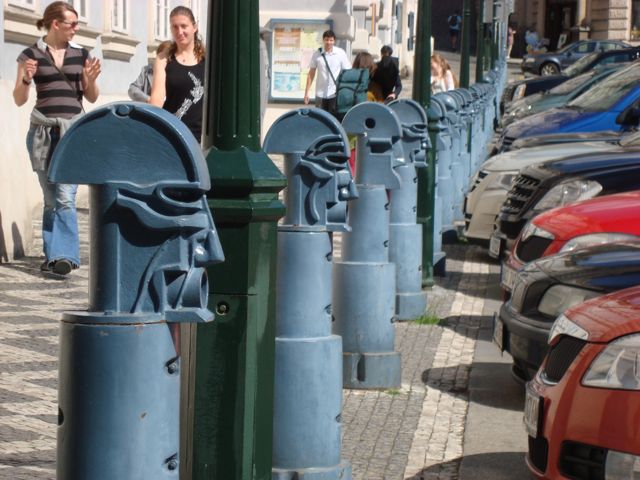
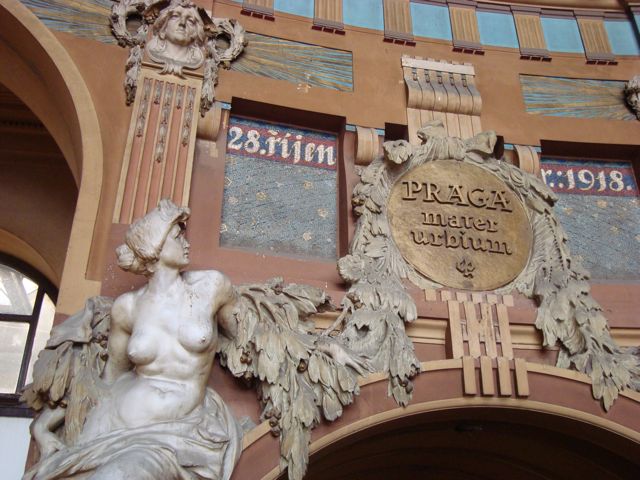
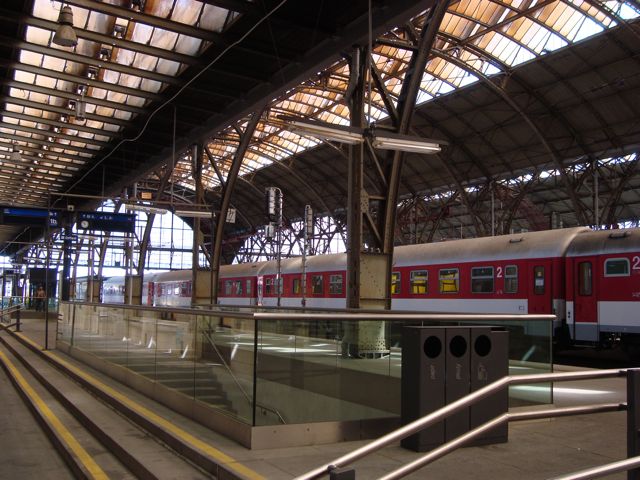
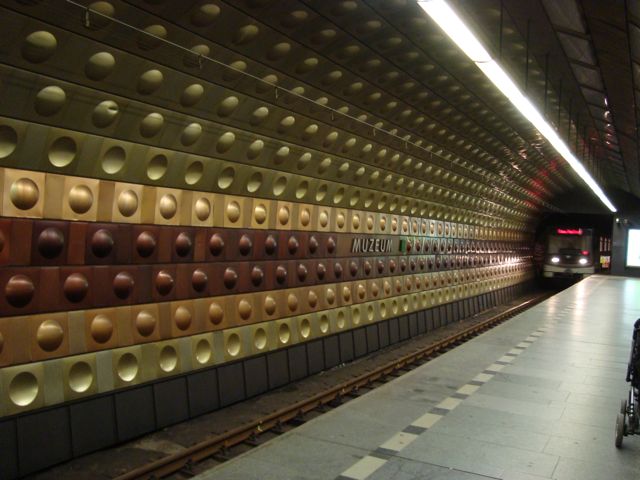
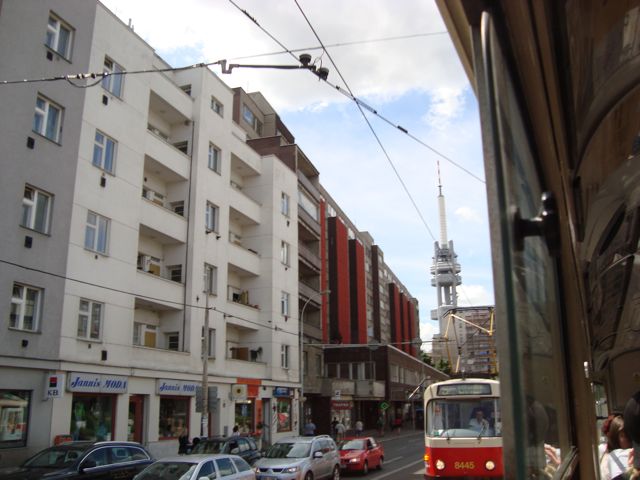
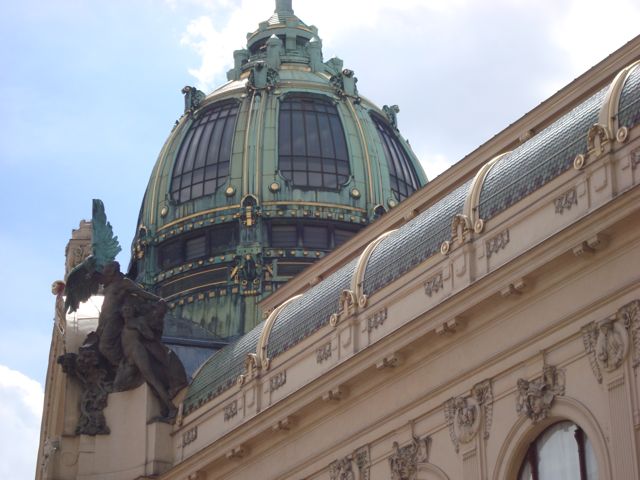
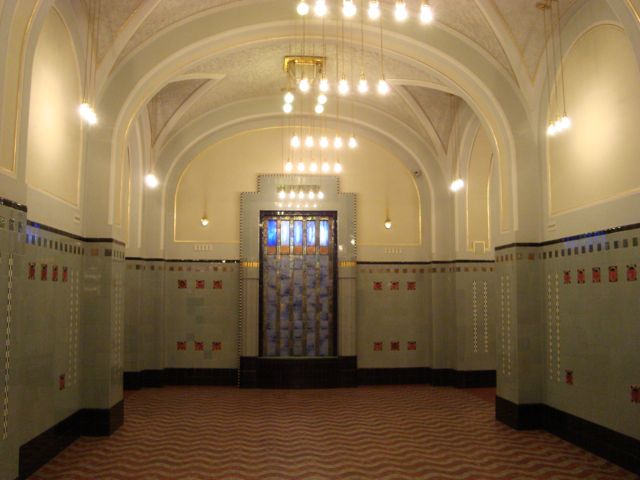
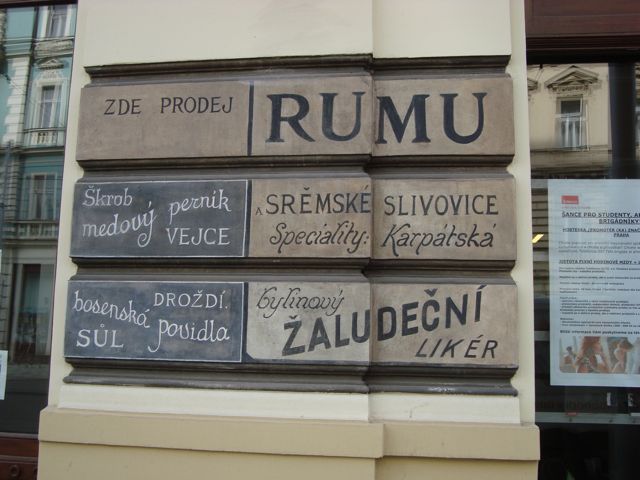
















Word count: 0 Step count: 12,206 + 13,417 + 10,432
Circumstances have militated against blogging for the last couple of days, so this will be a rather scattered catch-up post.
The other day at dinner we recognized the song that was playing, something in English, but couldn’t quite place the singer. I used the Shazam app on my phone to identify it: Andy Williams. For the entire rest of that dinner we were treated to Andy Williams covers of such entirely inappropriate sixties classics as “Killing Me Softly” and “Fire and Rain.” Kind of head-‘splodey.
We have seen a lot of castles in the last couple of weeks. You know the expression “good fences make good neighbors”? It’s the same with castles… or, perhaps, “bad neighbors make good castles.” This hunk of the world has been a border region, coveted by German-speaking and Czech-speaking peoples (with occasional incursions by the Turks, Swedes, and Russians) for many centuries, which means that every good defensive point has a castle built on top of it. If you like castles, I can recommend the Czech Republic as a place to visit. A lot of these castles have been used as locations for fantasy movies.
We toured the Museum of Communism, which was extremely informative if a bit depressing, then walked through Wenceslas Square where so many demonstrations took place in 1968 and 1989. Seeing those videos made me think about our 1960s demonstrations and the Occupy movement. The oppression those protests were against was mushier than the oppression the Czechs suffered, the protests less unified, the results more ambiguous. The Iraq War protests may have eventually led to Obama’s election, but the results of that election have not been as much as we (progressives) had hoped. Fundamentally, I think the difference is that the US is more diverse and decentralized in both good and bad ways.
At the Mucha Museum we learned about Alfonse Mucha, the greated Art Nouveau artist you’ve probably never heard of. A contemporary of Toulouse-Lautrec’s, Mucha produced some brilliant lithographs and advertising posters, particularly for Sarah Bernhardt, with a delightfully lively line and expressive faces. I liked his earlier funnier stuff, i.e. the commercial work he turned out in Paris and New York, more than the nationalistic stuff he did after he returned to his homeland and worked to develop the Czechosolvakian state. He even designed the money, as well as a fabulous window at St. Vitus Cathedral.
We visited the House of the Black Madonna, a cubist building, and I was surprised to find it appeared quite conventional to my eye. I suppose it may have been more of a shock at the time. Had coffee at the cafe there, along with a “cubist pastry” which looked rather more Escher than Picasso.
At the Communist Museum and also at some junk shops we stopped in, we bought some Communist-era pins, including one commemorating the Lunokhod-1 moon rover (it landed in 1970) and another from the Tesla lightbulb factory. This Tesla company was a major Czech electronics manufacturer during the Communist era; it was named after the inventor, not founded by him, but the pin is still a very cool thing to have. I also bought an old Czech identity document, like the ones in the Czech movie Identity Card (Obcansky Prukaz) that we saw in the Portland International Film Festival the other month.
Kate’s knee is much improved.
Our favorite restaurant in Prague was probably the Cafe Lounge (yes, that’s its name), where we had a dinner so lovely we came back for breakfast the next day. Also some of the best coffee we’ve had on this entire trip, and that’s saying something. They even made me a flat white, a coffee drink I haven’t seen since Australia! Other good meals were at Pizzeria Grosseto (Italian) and Noi (Thai). Most of the Czech restaurants we ate at in Prague were, unfortunately, not nearly as good. Or maybe we’re just getting a little burned out.
By the time we left Prague I knew and could use reliably the Czech words for yes, no, please, thank you, excuse me, and hello, though I never got a handle on the word for goodbye. I could read and recognize many more words on signs, including men, women, bakery, cafe, restaurant, exit, and danger, and sound out a lot of words that turned out to be cognates or near-cognates from English, French, or German. I could even pronounce words that would have seemed impossible before, such as zmrzlina (ice cream), and spot typos in signs. However, all of this was mere politeness on my part, as just about everyone we dealt with in Prague spoke English. I was not too surprised to get English from the clerks at the hotel and train station, but it was surprising to me how many waiters and waitresses had very good English. I guess there have been a lot of English and American tourists here since the fall of Communism, because it’s still pretty darn cheap.
At one point in our perambulations we came to a police checkpoint, where bored policemen were searching every car trunk and looking under each car with mirrors before allowing it to proceed. The cause turned out to be the American embassy, a block away, which made me sick to my stomach. This kind of oppression is more suitable to the Russians than the Americans, and the more we do it the more it is necessary. But even if I were President, I have to admit that once you’ve started this kind of pointless repressive “security” it’s difficult to stop. The improved public opinion that results from the relaxation of security will not appear for some time, producing a window during which security has been relaxed but public opinion is still low, making a security incident more likely. Kind of like starting medication for depression — there’s a window during which you’re still depressed, but now have enough energy to actually do things, creating a risk for suicide.
Prague’s Municipal House, a concert hall and civic center, is a beautiful Art Nouveau building, well worth a visit. The old part of the train station was also clearly beautiful in better days but is currently in very sad shape. I hope they get it fixed up soon.
We had reserved tickets to a play on Thursday night via the web, but when we went to pick them up we found that we were supposed to have picked them up within one week of ordering them and our reservation had been canceled. After a certain amount of kerfuffle (it’s not at all clear whether or not we actually paid for them in the first place) I finally wound up just buying two new tickets; the balcony (with the best view of the English supertitles) was sold out, but after consultation with her manager the box-office clerk sold me two orchestra seats with the seat number crossed off and “extra seat in balcony” hand-written in. And, indeed, that’s where we were seated, in two folding chairs at the end of the first row… though when the curtain went up the front row was almost completely empty and we and the one other couple there moved closer to the middle. Whatever.
The play, The Builders, was one we’d seen before, in Glasgow, and were looking forward to seeing again, albeit this time in Czech with English supertitles. At least that’s what we thought. However, as we entered the theatre we noted that the program book and posters all featured large splatters of blood, which didn’t suit the charming domestic comedy we remembered. As it turned out, what we got was a completely different play, a blood-splattered charming domestic comedy. Alice and Manfred, a normal though somewhat neurotic couple, are slowly driven mad by the illegal and dishonest Russian workers who are taking forever to renovate their house. The action escalates from hiding a body after an accidental death, to killing a worker in a quite legitimate fit of passion, to cold-blooded murder, to a gleeful killing spree… with lots of laughs, and the audience applauding the last few deaths quite vigorously. Much of the comedy was physical (including a very impressive swinging-from-the-chandelier bit) and although the supertitles were sometimes missing or out of sync with the action, together with the performances they were good enough for us to appreciate a lot of the verbal comedy as well. We enjoyed the performance greatly.
And so we bid farewell to the Czech Republic. I’ve enjoyed my time here but it will be good to get back to a place where I can kind of speak the language. We’ve been on the road for three weeks now, with one more week to go, and we’re tired but still enjoying ourselves.
Shared a second-class compartment on the train to Dresden with a Czech family, and got picked up by the van from our hotel as arranged by email the night before (though we had to call them to figure out where the van was waiting for us). Our room at the Hotel Privat (AKA Das Nichtraucher Hotel) is clean and tidy, a bit bigger than the one we had in Prague, and the Internet is free though it’s provided through a dongle that plugs in the electical socket rather than via wireless. Fortunately I can set up my Mac to rebroadcast the signal via wifi to our other devices.
Once we arrived and got our bearings, we asked at the front desk if they would call and make a reservation for a tour of Volkswagen’s “glass factory.” As it happened, there was an opening on the 5:00 English tour so we headed right there, with a stop on the way for a quick bite of sausage and bread.
The Volkswagen factory in downtown Dresden is the final assembly plant for the Phaeton, their most luxurious car. Every Phaeton is built to order, hand-assembled in a calm, quiet, and efficient factory with wood floors and indirect lighting for the employees’ comfort. Driverless carts shuttle parts and tools from place to place, and the assembly line consists of a sliding floor, which moves the car under assembly continuously and sedately from one station to the next. At other points in the process the car is gently picked up and carried from above by a monorail. I could describe it as the factory of the future, but it’s really more like the factory of the past, updated, because everything is done by hand. The whole thing, including the very impressive factory building itself and the guided tour we took, is marketing for Volkswagen but I enjoyed it a lot. Our tour guide, a German-speaking Texan from Pflugerville, was a hoot.
At the Texan’s suggestion, we took the tram a couple stops to Weissgasse, which turned out to be a kind of high-end food court right off the Altmarkt square — many restaurants all in one place, though outdoors and each of them independent. We chose the one that had the biggest crowd and had a very nice dinner, “fitness salad” of grilled turkey on grilled vegetables for me and a scampi tagliatelle for Kate. On our way to the tram stop after dinner we found ourselves in an American-style shopping mall, where Kate had fun browsing in a large book store.
You’d never guess that this entire town was basically reduced to rubble in 1945 and spent the time from then until 1989 under the Communist boot. About which more later, I’m sure.
Photos later.
Recent Comments